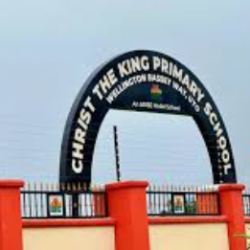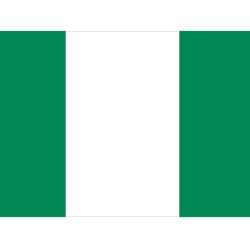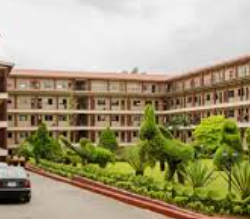Tristan da Cunha, part of a small volcanic archipelago in the South Atlantic Ocean, is renowned as the most remote inhabited island on Earth. Located about 2,400 kilometers (1,500 miles) from Saint Helena and 2,800 kilometers (1,750 miles) from South Africa, this tiny island is home to just over 260 people, most of whom reside in a settlement called Edinburgh of the Seven Seas. Despite its extreme isolation, the island is a British overseas territory, and its residents lead a self-sufficient life centered around farming, fishing, and a close-knit community.
Tristan da Cunha is a remarkable example of human resilience in one of the most remote places on Earth. Its isolation, harsh environment, and limited infrastructure pose significant challenges, yet its people have built a self-sufficient and thriving community. As the island looks toward the future, it faces both opportunities and challenges in preserving its unique way of life and welcoming the outside world.
Geographic Location and Isolation of Tristan da Cunha
Position in the South Atlantic Ocean
Tristan da Cunha is located in the South Atlantic Ocean, nestled between South America and Africa. As part of the larger Tristan da Cunha archipelago, it lies far from any significant landmass, making it the most isolated inhabited island on the planet. The island is part of a British Overseas Territory along with nearby islands like Saint Helena and Ascension Island, though all are separated by vast distances.
Distance from Other Landmasses
The nearest human settlement is the island of Saint Helena, located about 2,400 kilometers away. South Africa, where many of Tristan’s supply ships originate, is about 2,800 kilometers to the east, while the coast of South America is over 3,200 kilometers to the west. This geographical remoteness has long been both a defining characteristic and a challenge for the island’s small population.
History of Tristan da Cunha
Early Discovery and Naming of the Island
The island of Tristan da Cunha was first discovered in 1506 by Portuguese explorer Tristão da Cunha, after whom it was named. However, it was not inhabited immediately due to its remote location and harsh environment. European explorers occasionally visited, but it wasn’t until the early 19th century that the first permanent settlers arrived.
The First Settlers in the 19th Century
In 1816, the British formally annexed Tristan da Cunha, and a small garrison was established. This initial settlement was motivated by strategic concerns, as the British wanted to ensure the island wasn’t used by enemy forces, particularly during the Napoleonic Wars. Over time, the population grew, primarily from settlers from various parts of Europe, including sailors who were shipwrecked on the island.
Development into a British Overseas Territory
Tristan da Cunha eventually became a permanent British Overseas Territory. The island’s population descends from a handful of families who settled there during the 19th century, and much of the island’s culture reflects this heritage. Today, the island operates with a degree of local autonomy, but it remains under British sovereignty.

The Inhabitants of Tristan da Cunha
The Original Families and Their Descendants
The current population of Tristan da Cunha descends from just seven original families who settled on the island in the 19th century. These families include surnames like Glass, Green, and Swain, many of which are still present among the island’s inhabitants. The small population means that most of the islanders are closely related, contributing to a strong sense of community.
The Population and Demographics Today
Today, Tristan da Cunha has a population of around 260 to 270 people, living in the island’s only settlement, Edinburgh of the Seven Seas. The population is relatively stable, though emigration is an ongoing concern, especially among younger residents seeking opportunities abroad.
Life in Edinburgh of the Seven Seas
The island’s main settlement, Edinburgh of the Seven Seas, is where all the islanders live. Named after a visit by the Duke of Edinburgh in the mid-19th century, the village is a small, self-contained community with houses, farms, and essential services like a school and a hospital.
Daily Life on Tristan da Cunha
Subsistence Farming and Fishing
Life on Tristan da Cunha revolves around subsistence farming and fishing. Each family grows crops such as potatoes and vegetables in small gardens and keeps livestock like cows, chickens, and sheep. Fishing, particularly for lobsters, is an important economic activity, with the island’s lobster industry supplying markets in Europe and South Africa.
Limited Trade and Tourism
Due to the island’s isolation, there is limited trade, but Tristan da Cunha does export some goods, such as fish and handicrafts. Tourism is also a growing industry, although the difficulty of reaching the island means that only a small number of visitors arrive each year.
Community and Self-Sufficiency
The islanders are known for their self-sufficiency, producing much of their own food and managing local resources collectively. Despite their isolation, the residents maintain a close-knit community where cooperation is essential for survival.
The Economy of Tristan da Cunha
Local Industries: Fishing, Agriculture, and Handicrafts
Fishing, particularly lobster fishing, is the island’s primary economic activity. Agriculture is mainly for subsistence, with residents growing their own food to reduce dependence on imported supplies. Handicrafts, such as woolen goods, are also made by the islanders and sold to visitors or online.
The Role of Tourism and Overseas Trade
Though the island’s tourism industry is small due to its remote location, it plays a growing role in the local economy. Visitors who make the journey by ship often purchase local goods, providing a valuable source of income. In addition, the island trades its lobster catch with international markets.
Infrastructure and Services on the Island
Transportation and Connectivity (No Airport, Supply Ships)
Tristan da Cunha has no airport, and the only way to reach the island is by sea. Supply ships from South Africa arrive a few times a year, bringing essential goods like fuel, medicine, and food. Traveling to and from Tristan can take several days, depending on weather conditions and the availability of ships.
Housing, Healthcare, and Education
The island’s infrastructure is modest but sufficient for the needs of the population. Houses are simple but sturdy, built to withstand the harsh weather. Healthcare services are provided by a small hospital staffed by a resident doctor and visiting medical teams. Education is available up to secondary level, after which students must travel abroad for further studies.
Communication Links with the Outside World
Despite its isolation, Tristan da Cunha maintains communication links with the outside world through satellite phones and limited internet access. These services allow islanders to stay in touch with family members abroad and access essential information.
Volcanic Origins of Tristan da Cunha
The Geology of Tristan da Cunha
Tristan da Cunha is of volcanic origin, formed millions of years ago by volcanic activity in the South Atlantic. The island’s dramatic landscape is dominated by its central peak, Queen Mary’s Peak, a dormant volcano that rises over 2,000 meters (6,700 feet) above sea level.
Queen Mary’s Peak: The Island’s Central Volcano
The central volcano, Queen Mary’s Peak, is the island’s most prominent feature. Although it has not erupted since 1961, the peak and surrounding volcanic formations are a constant reminder of the island’s geological past. It is also a popular destination for the few adventurous tourists who visit the island.
Impact of the 1961 Volcanic Eruption on the Population
In 1961, a volcanic eruption forced the entire population of Tristan da Cunha to evacuate to the UK. This event had a profound impact on the islanders, many of whom chose to return once the danger had passed. Today, the islanders remain vigilant about the possibility of future eruptions, though the volcano has been dormant for over half a century.
Natural Environment and Wildlife of Tristan da Cunha
Flora and Fauna: Endemic Species
Tristan da Cunha is home to several unique species of plants and animals, many of which are found nowhere else on Earth. The island’s isolation has allowed these species to evolve in relative isolation, making Tristan an important site for biodiversity.
Marine Life Around the Island
The waters surrounding Tristan da Cunha are rich in marine life, including various species of fish, seals, and seabirds. The island’s lobster fishery is a key part of the local economy, and conservation efforts are in place to protect the marine ecosystem.
Tristan da Cunha as a Wildlife Sanctuary
Due to its unique environment, Tristan da Cunha is recognized as an important wildlife sanctuary. Conservation efforts are ongoing to protect the island’s fragile ecosystem from the effects of human activity and climate change.
Climate and Weather Conditions on the Island
Weather Patterns and Challenges
The climate on Tristan da Cunha is classified as temperate oceanic, with mild summers and cool, wet winters. The island experiences frequent rain, strong winds, and occasional storms, making life challenging for the inhabitants. The weather can also affect transportation, as rough seas often delay the arrival of supply ships.
Impact of Harsh Conditions on Daily Life
The harsh weather conditions impact every aspect of life on Tristan da Cunha, from farming to transportation. Islanders must be adaptable and resourceful to cope with the frequent rain and wind, which can disrupt daily activities and make the island feel even more isolated.
Challenges of Life on Tristan da Cunha
Remoteness and Isolation
The isolation of Tristan da Cunha presents a number of challenges, from limited access to medical care and education to difficulties in obtaining supplies. Islanders must be self-reliant and prepared to go long periods without outside assistance.
Harsh Weather and Natural Hazards
In addition to its isolation, Tristan da Cunha is subject to harsh weather conditions and natural hazards like volcanic eruptions. These factors make life on the island difficult, but the resilience of the community has allowed them to thrive in this remote environment.
Limited Infrastructure and Access to Resources
The limited infrastructure on Tristan da Cunha means that residents must make do with minimal resources. There are no airports, and supply ships only arrive a few times a year, making the island dependent on external support for many essential goods.
Cultural Aspects and Community Life
Traditions and Customs of the Islanders
Tristan da Cunha has a unique culture shaped by its isolation and the close-knit nature of its community. The islanders celebrate local traditions and customs, many of which have been passed down through generations. Shared activities like fishing, farming, and communal gatherings help strengthen the bonds between residents.
Language and Communication on the Island
The primary language spoken on Tristan da Cunha is English, though the islanders also speak with a distinct local accent and dialect. Communication is essential for maintaining the island’s sense of community, and residents frequently gather for social events and religious services.
Religious and Social Gatherings
Religion plays an important role in the lives of the islanders, with most residents adhering to the Anglican faith. Regular church services and community gatherings provide a sense of unity and support, helping the residents maintain their cultural identity in such an isolated location.
Administration and Governance of Tristan da Cunha
British Overseas Territory Status
Tristan da Cunha is a British Overseas Territory, and while the islanders govern many aspects of their daily lives, ultimate authority rests with the British government. A governor, based in Saint Helena, oversees the territory, but local governance is handled by an elected Island Council.
Local Government and Decision-Making
The Island Council, made up of elected representatives, manages local affairs and makes decisions on issues such as infrastructure, trade, and resource management. The council works closely with the British government to ensure the well-being of the island’s residents.
Laws and Regulations Specific to the Island
As part of its self-governance, Tristan da Cunha has its own set of laws and regulations tailored to the island’s unique needs. These include rules on fishing quotas, environmental protection, and property ownership, all of which help preserve the island’s way of life.
The Future of Tristan da Cunha
Environmental Conservation and Sustainability Efforts
Conservation is a major priority for the people of Tristan da Cunha. Efforts are underway to protect the island’s unique ecosystems and ensure that its resources are managed sustainably. The island has been declared a Marine Protected Area, which restricts fishing and other activities that could harm its biodiversity.
Challenges of Population Retention and Development
One of the biggest challenges facing Tristan da Cunha is retaining its population. Many young people leave the island for education or work, and not all return. The small population also makes development difficult, as resources are limited, and the island’s remoteness complicates trade and infrastructure projects.
Prospects for Tourism Growth
Tourism, though limited, offers potential for growth on Tristan da Cunha. While the island’s isolation makes it difficult to reach, its unique environment and culture could attract more adventurous travelers in the future. However, the island’s infrastructure will need to develop further to accommodate an increase in visitors.
Frequently Asked Questions (FAQs)
How can one travel to Tristan da Cunha?
The only way to travel to Tristan da Cunha is by sea. Supply ships from South Africa are the primary mode of transport, and the journey can take several days depending on weather conditions.
How do the inhabitants sustain themselves?
The people of Tristan da Cunha rely on subsistence farming, fishing, and some trade to sustain themselves. The island is largely self-sufficient, although it relies on supply ships for certain goods.
What is the climate like on the island?
Tristan da Cunha has a temperate oceanic climate, with mild summers and cool, wet winters. The weather is often unpredictable, with frequent rain and strong winds throughout the year.
Is there any internet or phone service on Tristan da Cunha?
Yes, Tristan da Cunha has limited internet and satellite phone services, which allow residents to communicate with the outside world. However, these services can be expensive and are not always reliable.
How does the island deal with medical emergencies?
Tristan da Cunha has a small hospital with a resident doctor, but serious medical emergencies require evacuation to South Africa, which can take several days. The island is equipped to handle basic healthcare needs but relies on outside support for more complex cases.
What wildlife can be found on Tristan da Cunha?
Tristan da Cunha is home to a variety of unique wildlife, including endemic bird species like the Tristan albatross and marine life such as seals and penguins. The island is a designated wildlife sanctuary, and conservation efforts are in place to protect its ecosystems.









